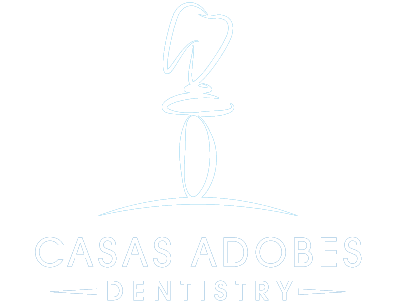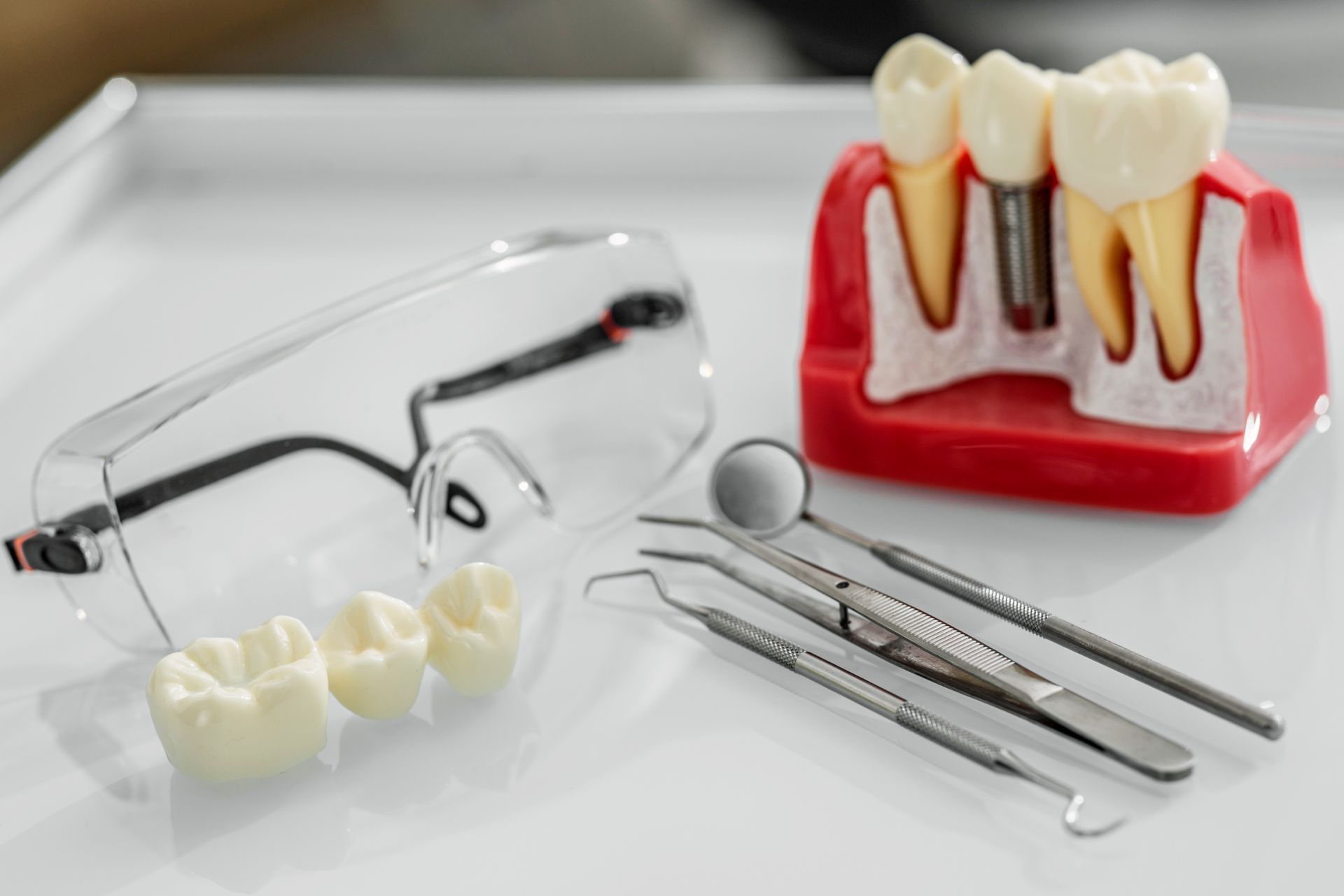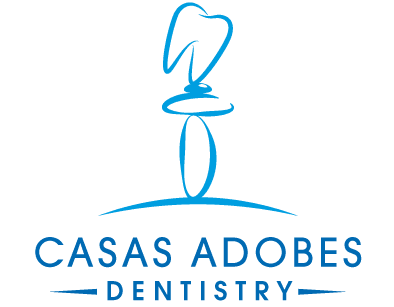Are Clear Braces More Expensive?

Usually, yes. Clear (ceramic) braces tend to cost about 10–20% more than traditional metal braces. In the U.S., metal braces commonly run $3,000–$7,000, while clear braces often range $4,000–$8,500. Your exact price depends on your case complexity, how long treatment takes, and local fees.
This article was prepared by the clinical team at Casas Adobes Dentistry, where we help patients compare clear braces vs. metal braces every week. We coordinate with local orthodontists, review insurance benefits, and walk patients through payment plans, HSA/FSA, and total cost of ownership so they can make confident choices. Our goal is to give you straight, practical answers without the sales pitch.
Clear vs. Traditional Braces. What’s the Real Difference?
How materials and appearance differ (ceramic vs. metal)
- Clear (ceramic) braces: Tooth-colored or translucent brackets that blend in with your smile. The wire may be silver or tooth-colored. They’re popular with adults who want a lower-profile look.
- Metal braces: Stainless steel brackets and wire. Highly durable and usually the most budget-friendly option.
Comfort, durability, and maintenance considerations
- Comfort: Both options can feel similar once you adjust. Ceramic brackets are a bit bulkier for some patients.
- Durability: Metal brackets are tougher and less likely to chip. Ceramic brackets can be more brittle, so
repair costs can be higher if you’re hard on your braces.
- Maintenance: Clear braces can
stain around elastic ties if you drink lots of coffee/tea or smoke. Good hygiene and occasional tie changes help.
Who clear braces are typically recommended for
- Adults and teens who want
more discreet treatment but
don’t want removable aligners.
- Patients whose lifestyle or job makes a lower-visibility option a priority.
- People who can commit to solid oral hygiene to minimize staining.
Cost Comparison at a Glance
Base price ranges for clear vs. metal braces
- Traditional metal braces: ~$3,000–$7,000
- Clear (ceramic) braces: ~$4,000–$8,500
- Clear aligners (e.g., Invisalign): ~$3,000–$8,000 (varies by case)
- Lingual braces (behind the teeth): ~$8,000–$10,000+ (most expensive)
Why the difference? Materials, lab fees, and appointment time can be higher for ceramic or lingual options.
Add-on costs to factor in (records, retainers, replacement parts)
- Diagnostic records (X-rays, photos, scans): $200–$500
- Retainers after treatment: $200–$600 each (often 2 are recommended)
- Repairs (broken bracket, wire): $50–$150+ per visit; ceramic repairs may cost more
- Whitening (optional after braces): varies; not required
Total cost of ownership over treatment time
Total cost includes base fee + add-ons + any repairs + retention. For example, a typical ceramic-braces journey might look like:
- Base fee: $5,500
- Records: $300
- Two retainers: $500–$1,000
- Occasional repair/urgent visit: $100–$200
Estimated total: ~$6,400–$7,000 (your mileage may vary)
What Drives the Price Up or Down
Case complexity and length of treatment
More movement = more time = more visits. Complex bites (overbites, crossbites, severe crowding) or adult cases with prior dental work can increase cost.
Provider expertise and appointment frequency
Experienced orthodontists may charge more, but efficient treatment and fewer visits can balance the total. Ceramic braces may need slightly longer chair time for some adjustments.
Location and practice overhead
Costs vary by city and region. Urban practices with higher overhead and demand may price higher than suburban or rural offices.
Materials, lab fees, and brand choices
Ceramic brackets and tooth-colored wires typically cost more than stainless steel. The brand and technology the orthodontist uses also influence price.
Treatment Timeline and Its Impact on Cost
How visit cadence and adjustments affect fees
Most practices bundle routine visits into a global fee, but a longer treatment often has a higher global fee. Choice of appliance can change how often you’re seen.
Breakage, staining, and repair/maintenance costs
- Breakage: Ceramic brackets can chip if you bite hard foods. That means
repair costs and possibly a longer timeline.
- Staining: Not harmful, but stained ligatures may need more frequent changes (usually included, but verify).
Aftercare and retention phase expenses
Retainers are not optional they keep teeth in place. Budget for replacement retainers every few years (especially clear Essix-style retainers).
Benefits Beyond Price
Aesthetics and confidence during treatment
Ceramic braces are less noticeable in photos and face-to-face conversations important for adults in client-facing roles.
Lifestyle fit and professional considerations
If you speak on camera, meet clients, or prefer not to announce your orthodontic treatment, clear braces can be a smart middle ground between metal braces and aligners.
Trade-offs vs. traditional metal braces
- Pros (ceramic): Discreet look, suitable for many cases.
- Cons: Higher cost, potential for more fragile brackets, and possible staining around ties.
Paying for Clear Braces
Insurance coverage and medical-necessity rules
- Many
dental plans contribute a
lifetime orthodontic maximum (e.g., $1,000–$2,000).
- Adult coverage varies; some plans exclude adult braces unless medically necessary.
- Coverage is usually appliance-neutral (metal vs. ceramic) up to your plan max confirm details before you start.
HSA/FSA and tax-advantaged options
Orthodontic fees are HSA/FSA-eligible. Using pre-tax dollars can cut your out-of-pocket by your tax rate. Plan ahead for FSA contribution windows.
In-office financing and payment plans
Most orthodontic offices offer low- or no-interest payment plans with an initial down payment and monthly installments that match your treatment length.
How to Decide What’s Worth It for You
Matching goals, budget, and timeline
Ask yourself:
- Is a
lower-visibility look worth paying 10–20% more?
- Will I keep up with hygiene to avoid staining?
- Do I want a fixed option (braces) or the flexibility of removable aligners?
Questions to ask at your consultation
- What are my
treatment options (metal, ceramic, aligners, lingual) and their
price ranges?
- How long will my case take with each option?
- What’s included in the fee (records, retainers, emergency visits)?
- Are there
repair fees for broken brackets, especially ceramic?
- Do you offer
in-office financing?
- How does
insurance apply to each option?
- What’s my total cost of ownership over time?
Red flags when comparing quotes
- Prices that are
much lower than the local norm without clear explanations.
- Quotes that
exclude retainers or routine visits.
- Vague timelines with no discussion of case complexity.
- No written breakdown of
what’s included and what’s extra.
Next Steps
What to bring to a cost consultation
- Insurance card (dental plan info and orthodontic rider, if any)
- Medication list and health history (can affect treatment choices)
- Any
past orthodontic records (X-rays, scans) if you have them
- A short list of your priorities (budget, discreet look, speed, comfort)
Getting a personalized treatment and price estimate
Every smile is unique. The surest way to compare ceramic vs. metal braces cost is a face-to-face exam with diagnostics. You’ll leave with:
- A clear diagnosis and recommended options
- An estimated
treatment time
- A written
cost breakdown (base fee, what’s included, potential add-ons)
- Your
payment plan and how
HSA/FSA/insurance apply
If you want a discreet look and are comfortable paying a bit more (and maintaining excellent hygiene), clear braces are a strong choice. If lowest cost and maximum durability are top priorities, traditional metal braces are hard to beat. Either way, focus on the right diagnosis, a realistic timeline, and a transparent cost breakdown that’s where the real value lives.
Ready to Get Started with Clear Braces?
Take the Next Step Toward Your Perfect Smile
Don't let cost uncertainty hold you back from achieving the confident smile you deserve. At Casas Adobes Dentistry, we make orthodontic treatment accessible with flexible payment options, insurance coordination, and transparent pricing.
Why Choose Casas Adobes Dentistry:
- 20+ years of experience with clear braces and orthodontic coordination
- Transparent pricing with detailed cost breakdowns upfront
- Multiple payment options including 0% financing available
- Insurance expertise to help you get maximum benefits
- Convenient Tucson location serving the greater metro area
Schedule Your Free Consultation Today or
request an appointment online

Frequently Asked Questions
Will my insurance cover clear braces the same as metal braces?
Most dental insurance plans treat ceramic and metal braces equally up to your orthodontic lifetime maximum (typically $1,000-$2,000). However, adult coverage varies significantly between plans. Some exclude orthodontics for adults entirely unless deemed medically necessary. Always verify your specific benefits before starting treatment, as the "appliance-neutral" coverage isn't universal.
What happens if I break a ceramic bracket - will it cost more to fix than metal?
Yes, ceramic bracket repairs typically cost 20-30% more than metal bracket repairs. Ceramic brackets are more brittle and prone to chipping, especially if you bite hard foods. Most practices charge $75-$200 per ceramic bracket replacement versus $50-$150 for metal. Factor this into your decision if you're hard on your teeth or play contact sports.
Can I switch from metal to clear braces mid-treatment to save money upfront?
While technically possible, switching mid-treatment isn't cost-effective. You'll pay removal fees, new bracket placement costs, and potentially extend your treatment timeline. Most orthodontists charge almost the full price difference anyway. It's better to choose your preferred option from the start or explore hybrid approaches where only front teeth get ceramic brackets.
Are payment plans available, and do they charge interest?
Most orthodontic practices offer payment plans, but terms vary widely. Many provide 0% financing for 12-24 months with approved credit. Longer terms (36+ months) often carry 3-8% interest rates. Some practices offer in-house financing with no credit checks but higher fees. Always compare the total cost including interest before committing to extended payment plans.
How much should I budget for the entire treatment beyond the base price?
Plan for 15-25% above the quoted base fee for total treatment costs. This includes diagnostic records ($200-$500), retainers ($400-$800 for two sets), potential repairs ($100-$300 for ceramic), and possible treatment extensions. For a $5,500 ceramic braces case, budget approximately $6,400-$7,000 total to avoid surprises.







